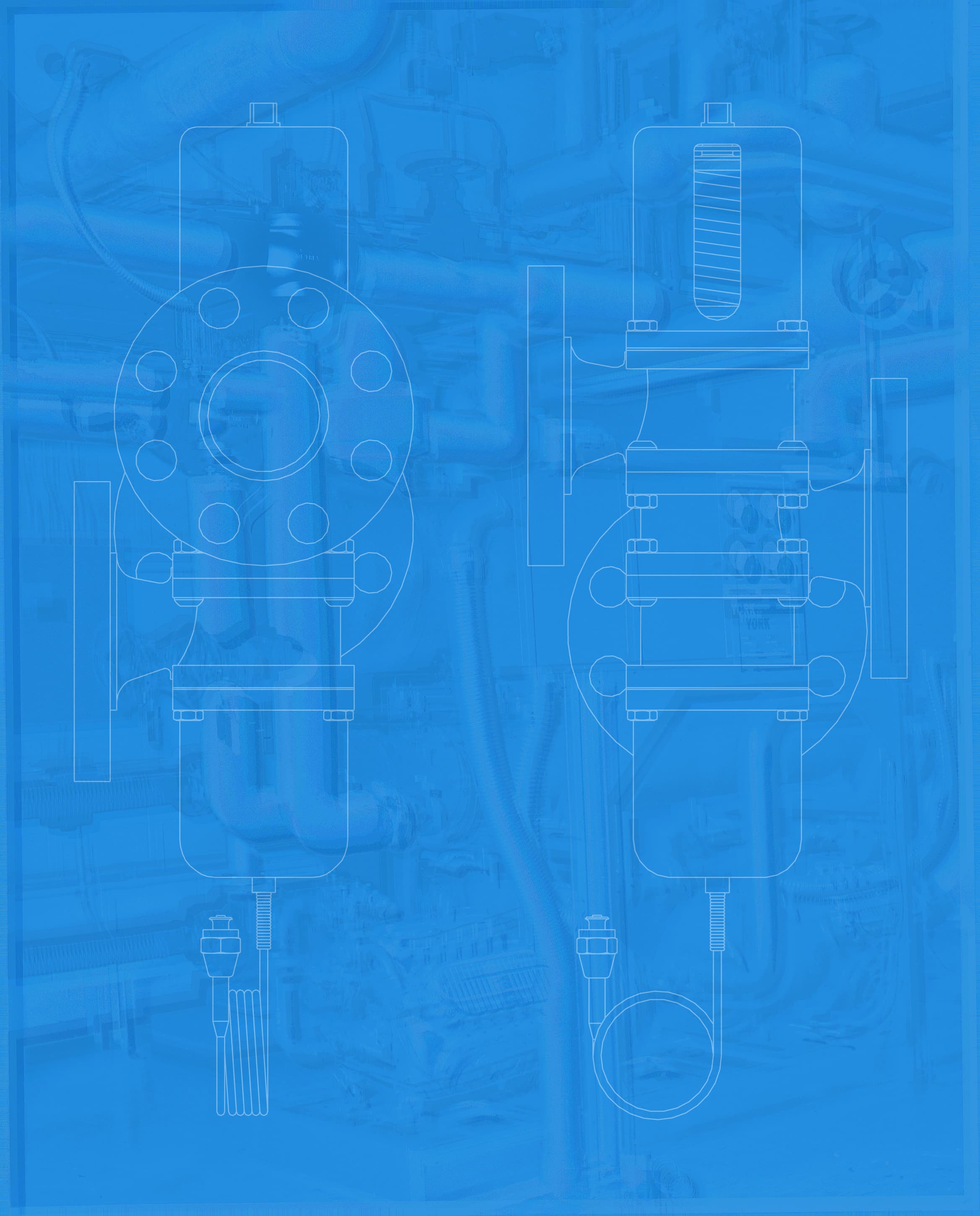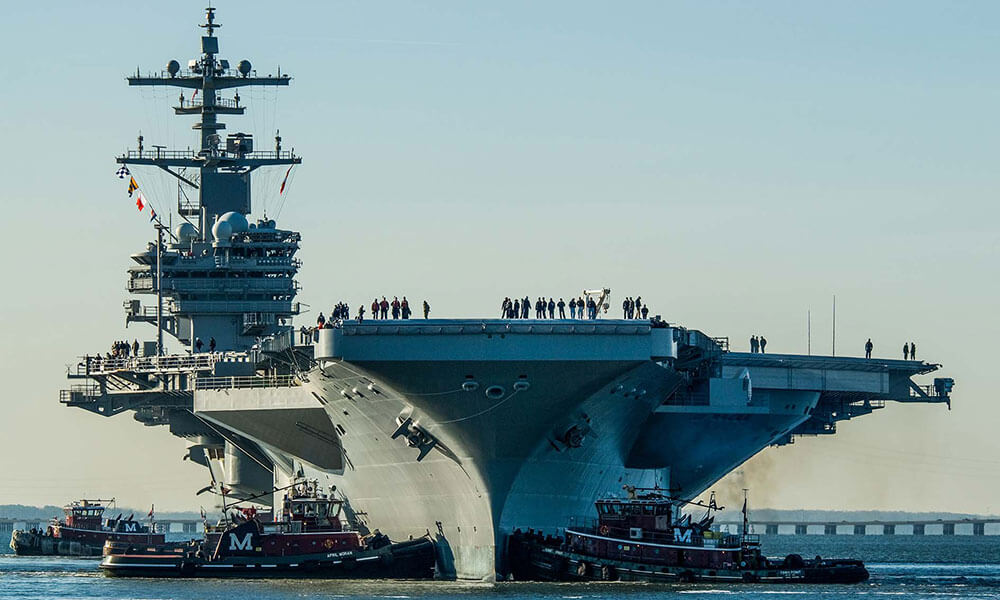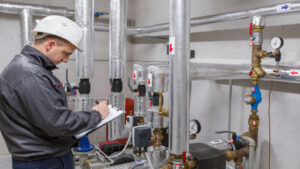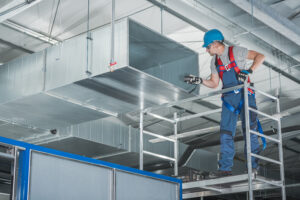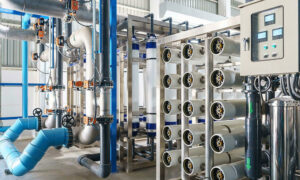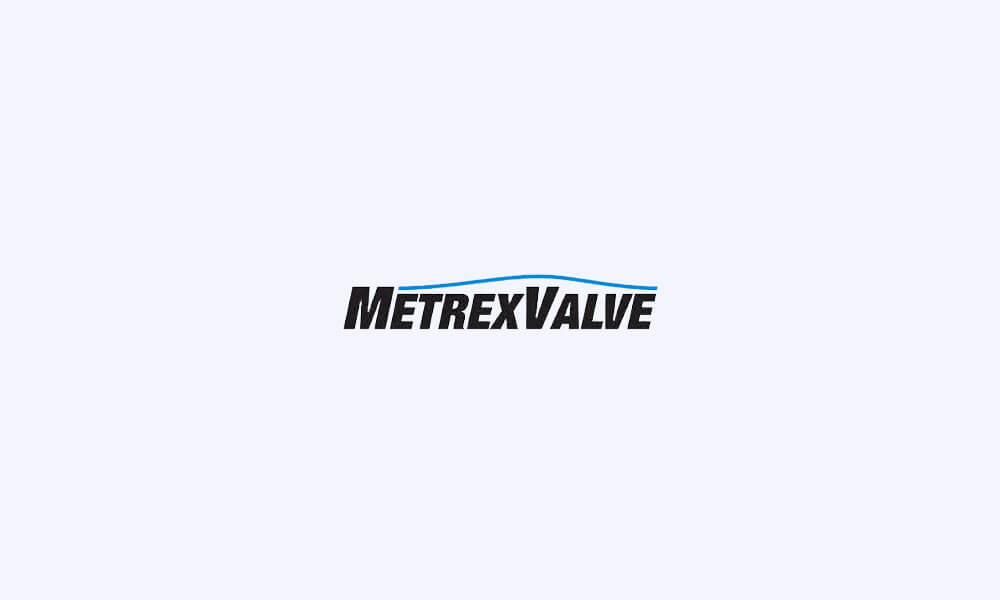In the late 2000’s, Metrex Valve had the opportunity to submit design proposals to supply various valves on Ford-class aircraft carriers, the vessels then under development to replace the Nimitz-class carriers, whose ability to accommodate continuing technological advances was becoming limited. The general story of our ongoing involvement in supplying components for these vessels is an illustration of the challenges of working on valve designs for military / naval applications, and the special considerations that may not apply for commercial valves.
New Carriers for a Modern Age
Ford-class carriers require numerous types of valves for functions all over the ship, all widely different, with diverse operational requirements. Metrex was approached in regard to a subset of these valves, focusing on those that were similar to valves we already produced or that fell within our area of expertise. Rather than soliciting draft proposals from suppliers with no previous experience in designing and producing the type of components desired, the shipbuilder specifically sought out specialists with proven track records. Having already produced valves for military shipboard and submarine applications, Metrex possessed the requisite capability.
We ultimately received contract awards for further development on six valves to be custom designed to spec for use on the Ford-class carriers, including valves to be used in the shipboard air conditioning system and desalination plant. Among the features that differentiated this work from developing valves for use in commercial applications were specific considerations for the performance of the components in question, including durability and longevity, as well as the long timeline potentially involved.
Quality, Reliability, Longevity
The valves developed for the Ford-class carriers were expected to be able to withstand potentially challenging conditions on board ship, including those that might arise during combat situations. As such, the valves had to be tested to comply to applicable military standards to ensure their continued function under specific conditions. These included Military Standard 901 (shock testing, “to verify the ability of shipboard installations to withstand shock loadings which may be incurred during wartime service due to the effects of nuclear or conventional weapons”) and Military Standard 167 (vibrational testing, which establishes the ability of shipboard equipment to perform their principal functions during and after either environmental or internally excited vibration on ships with conventionally shafted propulsion.) In addition, the valves including electrical actuators had to undergo testing to verify that they didn’t produce electromagnetic interference that might impact other shipboard systems.
Several of the valves designed for use in an undisclosed location aboard ship presented an interesting challenge, because the NAVY required titanium to be used for the valve body and some internal components. Seawater is notoriously corrosive, destroying more typical valve materials like bronze or brass in a few years; the NAVY wanted these valves to have a 40-year life before replacement. That required material with superior corrosion resistance. Sourcing the titanium needed required developing a relationship with a new supplier, and designing the valve required careful attention to make sure that bolting and other stress requirements did not overstress the material.
The process of moving from putting the initial quote together and producing a preliminary design, through research and development, testing, fitting, assembly, and production took about three and half years. The initial order was for valves for one aircraft carrier; Metrex is now producing valves for the third and fourth. With space between builds of five to ten years, it is clearly vital that the military source components from established, reliable vendors able to provide service for future procurement contracts.

